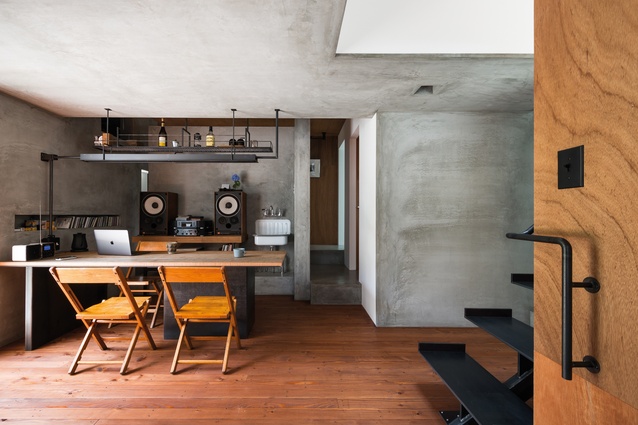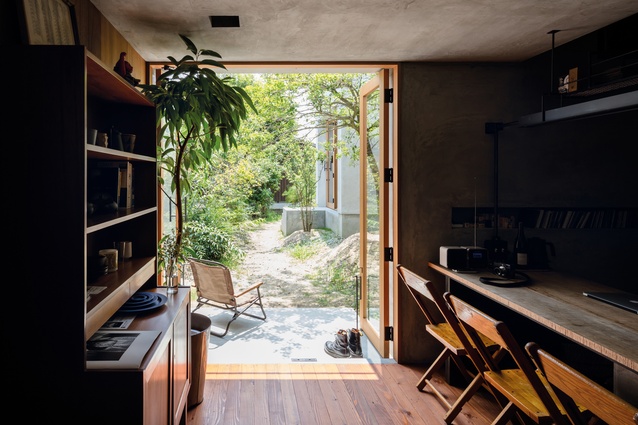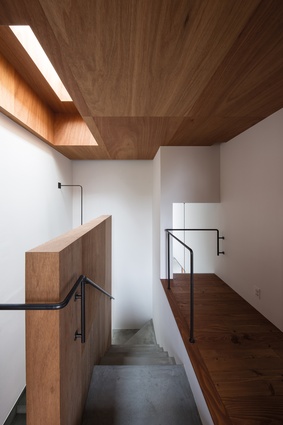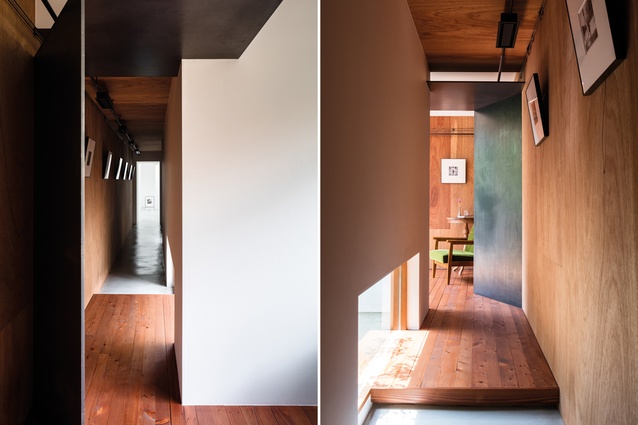In praise of shadows
This house for a photographer uses its inhabitant’s main tools of trade – light and shadow – to create a moody, contemporary abode with a nuanced sense of beauty.
This house for a photographer is a study in minimalism. Its hard-edged geometry is unexpected in this village in the Shiga Prefecture where the architectural language is, for the most part, timber structure beneath elaborate clay-tiled gables.
Its resident might very well line up a hero shot to highlight this juxtaposition, framing the home’s concrete and galvanised-steel form beneath the stone portal of a shrine that is just across the street. In Japanese culture, this portal or torii signifies the transition between the commonplace and the sacred.
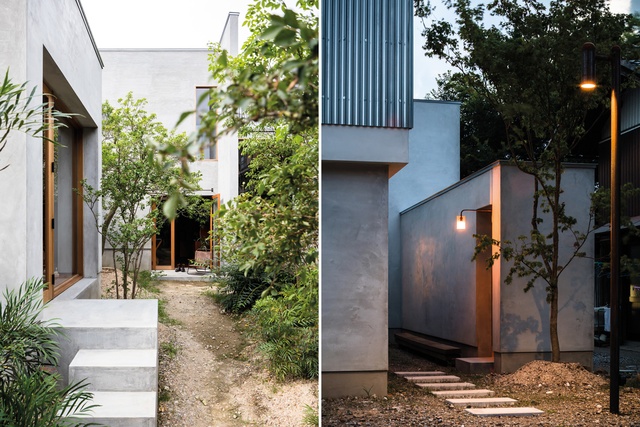
When architect Kouichi Kimura of Form was asked to design this two-levelled home and studio space on an L-shaped piece of land, he saw the perfect opportunity to explore a relationship between shadow and light. “I envisioned closed walls so you become conscious of the interior space and considered the position and size of openings so that they would allow impressive light in,” he says.
Playing with light and darkness to refine spaces is nothing new – it’s 85 years since Japanese novelist Jun’ichiro- Tanizaki wrote In Praise of Shadows, lauding their delicate, nuanced effect – but it does seem entirely appropriate here.
The journey to the front door begins in a narrow external corridor, which runs alongside the atelier. Often a bicycle is pulled up here, abandoned on the pavers between the brutal presence of concrete walls and steel sliding doors that soar up on alternate sides.
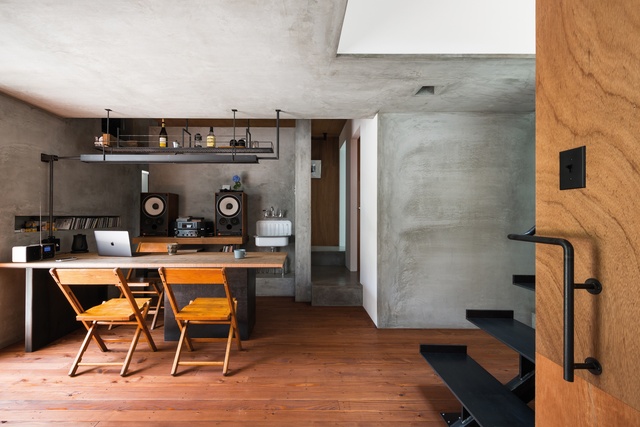
The first room is not a humble entry hall but a chapel-like gallery with black-steel fittings and white walls where art meets architecture in the dynamic array of framed photographs that are propped up against the raw walls.
A deep-set skylight floods the end of the gallery with light that draws you to discover further. Light spilling from a narrow stairwell is again the visual cue to turn and step down to the central hall. This is the hub of the home, where a wooden kitchen counter is, finally, an indication that this is a living space too.
Timber flooring and plywood walls lend warmth, and an open-tread steel staircase leads the sculptural ascent to the bedroom zone above. The hall also looks out to a private, enclosed courtyard – so there’s an opening out of the architecture in that way, too. Two wooden doors connect to the atelier.
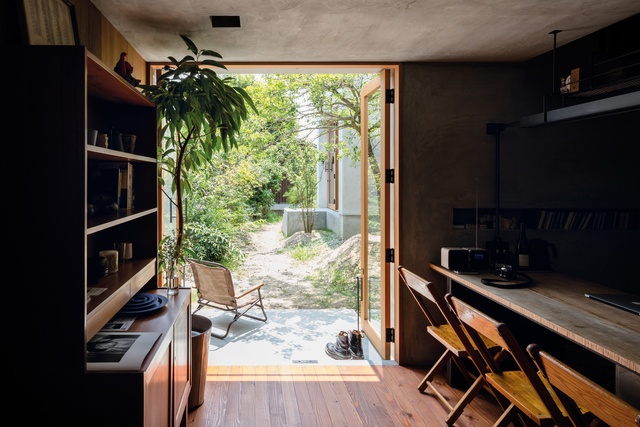
In planning the programme of the 167m2 house, Kimura did not necessarily divide the domestic day-to-day from the work areas. Like many self-employed creatives, he understood that line to be blurred. By far the greatest volume of the home is devoted to the double-height atelier which is only partially populated with the tools of his client’s vocation.
This crossover space is furnished sparsely with a vintage sofa and a low-slung coffee table, where the patina of age encourages an appreciation of the past. “The owner has a careful sense of beauty,” says Kimura.
Polished-concrete floors lend a sense of coolness, and there’s a guitar for amusement, tripods and industrial shelving with lenses and reference books, and a place to hang your hat. One window allows a view through to the upper level of the home while still others flood the space with natural light. “This is a space where the time and season are felt by way of the guiding light.”
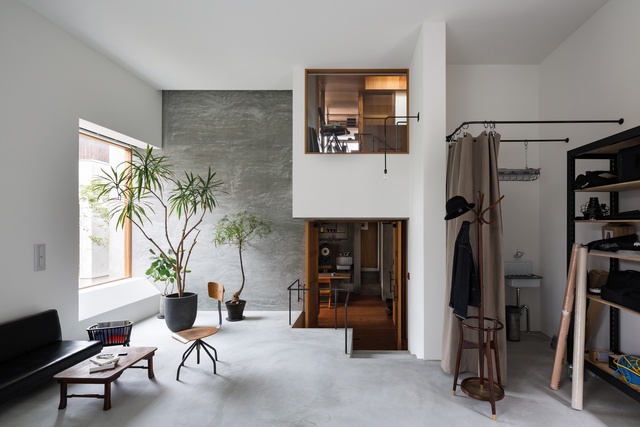
Although a metallic box perched on a concrete plinth may not be the norm for this prefecture where Japan’s largest freshwater lake, Lake Biwa, takes up a sixth of the land, the neighbours in their more traditional homes are won over.
The silvered colour of the vertical long-run iron Kimura specified for cladding reflects dull light but does not dazzle. “One neighbour told me that he thinks the house with its calm tones melts into the cityscape,” he says.
Despite the contemporary make-up of the design, the building’s aura is one of peace and mindfulness. The limited palette of unadorned materials allows the shapes of the openings – windows with views of the sky or ground, doors that pivot or slide, apertures, alcoves and the shifting shafts of light – to steal the show.

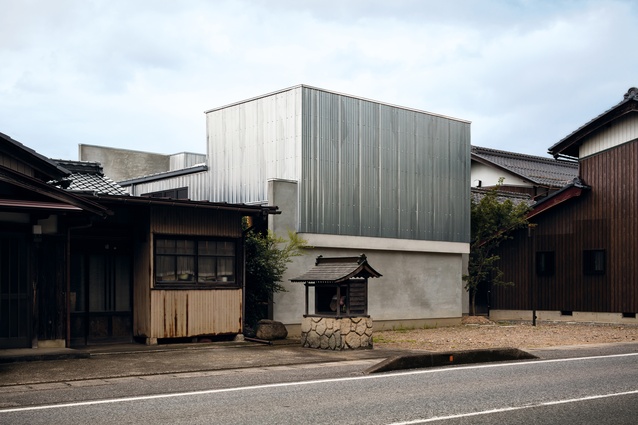
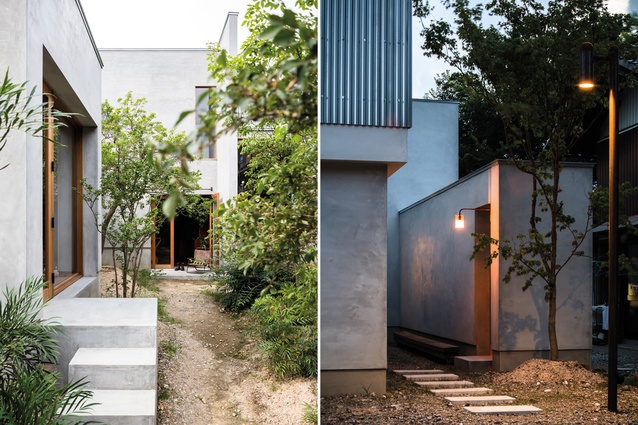
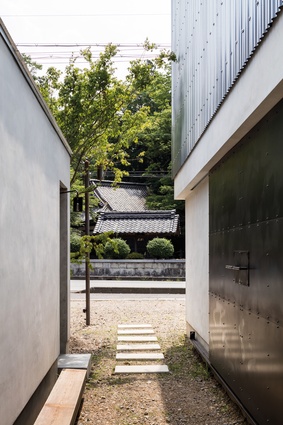
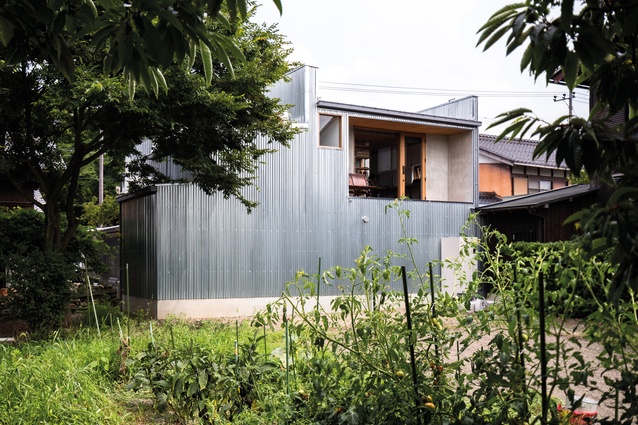
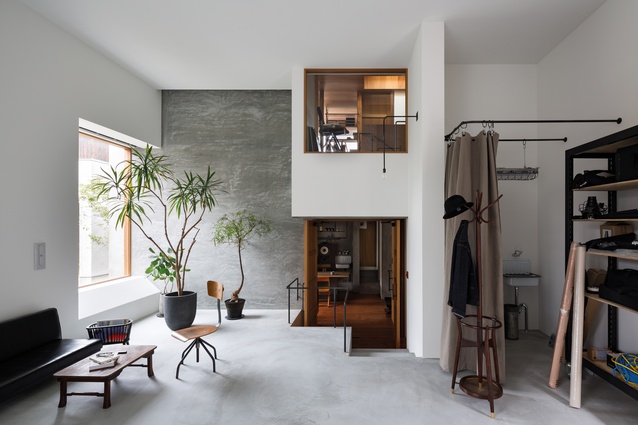
![It’s 85 years since Japanese novelist Jun’ichirō Tanizaki wrote <em>In Praise of Shadows</em>, lauding their delicate, nuanced effect — but [the book] does seem entirely appropriate here.](https://cdn.architecturenow.co.nz/site_media/media/cache/4c/13/4c13ef98cc63ab5e85d918a3a6a292ef.jpg)
